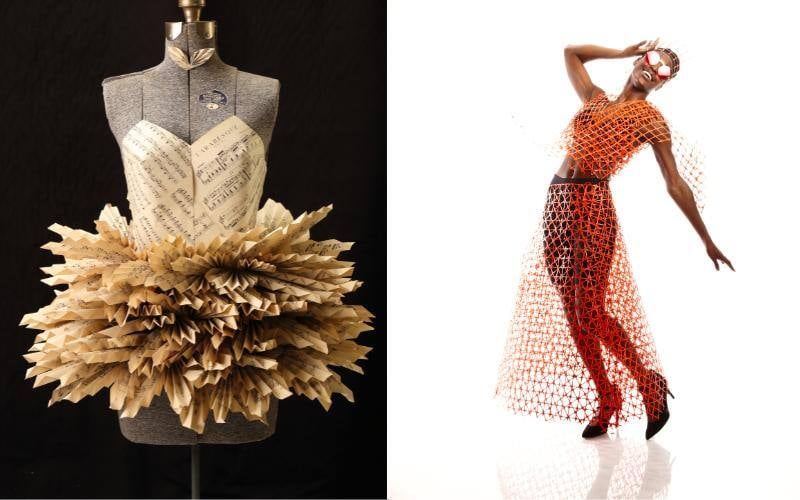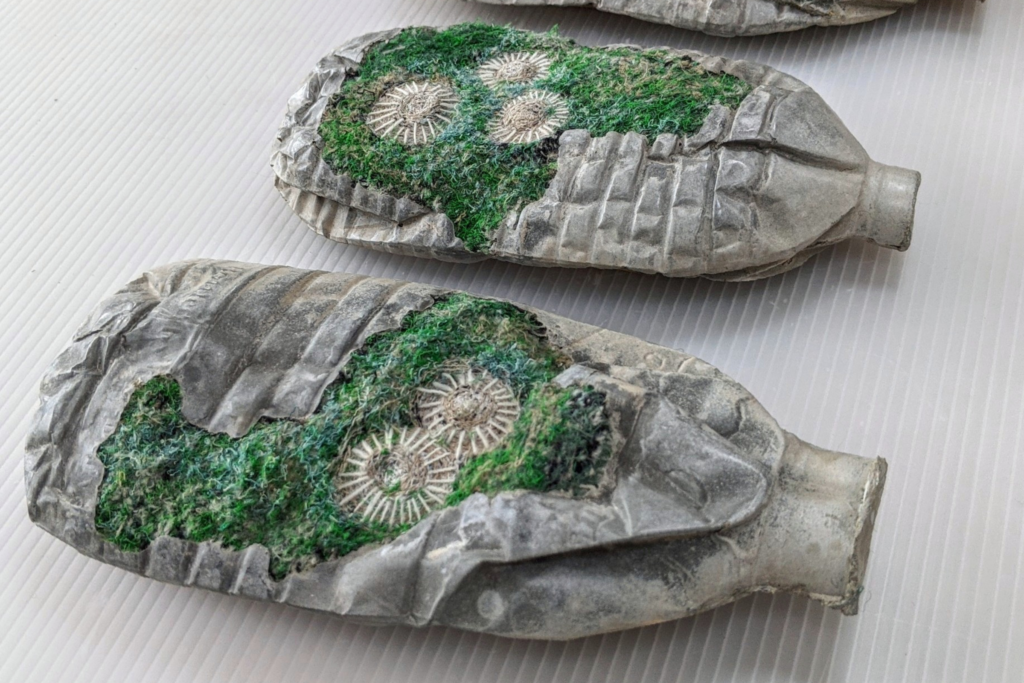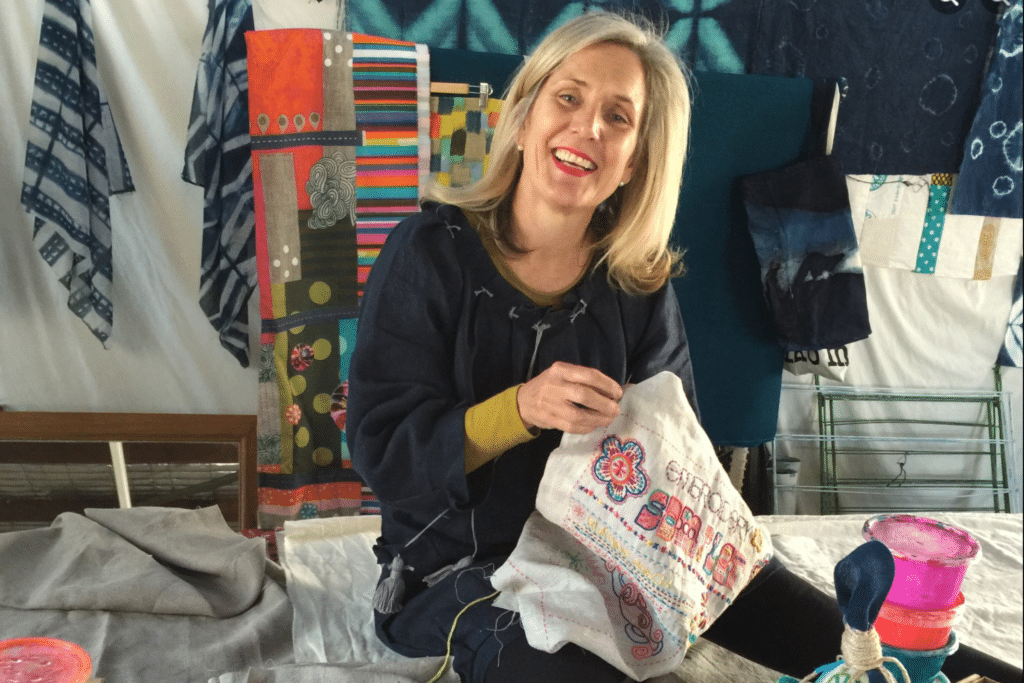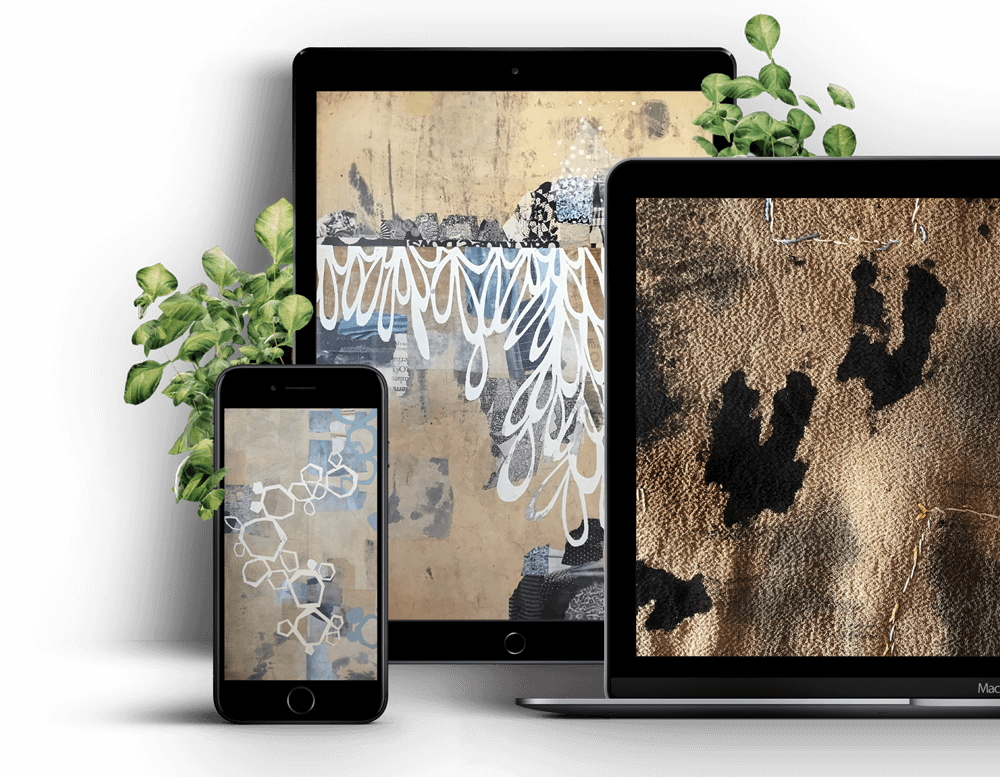Ann Weber: From Pottery to Cardboard
Ann Weber’s Friday Feature Artist Interview can be found at the bottom of this page.
After years of crafting functional pottery, in 1991, artist Ann Weber began working with cardboard, wanting to eliminate the cumbersome process of clay and create larger forms that are lightweight.
Inspired by Frank Gary’s Cardboard Furniture, which transformed an everyday material into structurally sound and appealing functional objects, Ann began using this often discarded resource to build monumental forms that expand the possibilities of resourcefulness and beauty. With a BA in Art History and an MFA from the California College of Arts and Crafts, Ann studied under artists Viola Frey, whose large-scale sculptures influenced her work and bends, twists, weaves and staples, ragged strips of cardboard into organic abstractions that hang on walls or stand dramatically in a space.
Ann was generous enough to devote some time to Fibre Arts Take Two to explore her artistic journey.
Pottery
Ann has had a long and storied career, “The longer one lives, the more time one has to get things done,” says Ann, “and that’s one of the beauties of being 72 years old. And speaking of 1972, that’s when I graduated from college.”
College was the start of Ann’s career, but her original medium was very different to what she works with today, “I fell in love twice. One was with the medium of clay. The other was with the man sitting beside me on the potter’s wheel. We decided in 1972 that we were going to be potters and that we were going to move to a location in the United States where we could buy land and open a store and function. We started making functional pottery on the potter’s wheel, rented a little grocery store on the outskirts of town, made a little showroom out of old barn wood, and started selling pottery immediately.
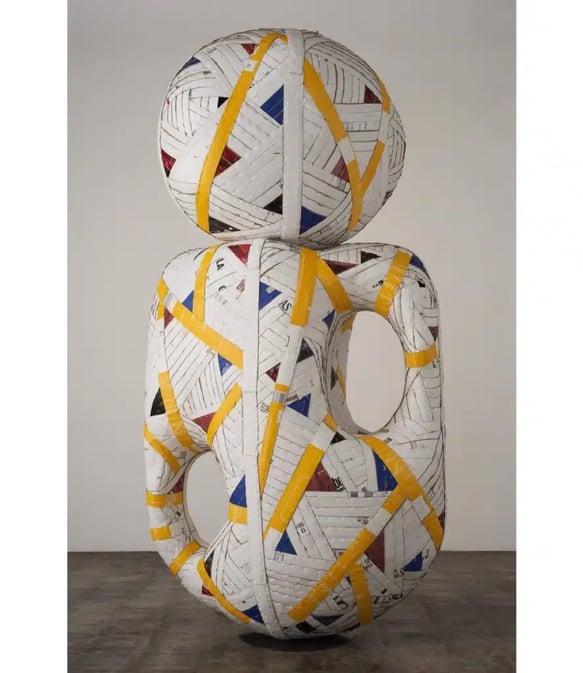
New York
A significant change in Ann’s life after this came with another move, “After living in Ithaca, New York, I moved down to New York City and fell in love again. So, second marriage, and I say I married into an apartment on Perry Street in the West Village.
When you’re in New York City, you get your artwork in the New York Times newspaper, and they are interested in sending over a photographer, so they sent over Bill Cunningham. That’s one of the beautiful things about living in a central metropolitan area, as I have done for most of my career. So yes, that was a great opportunity.
However, I moved to New York City in the early 80s. And that was the beginning of the disco. It was sort of the end of the crafts movement. A lot of us that had been working for 10 or 15 years were starting to burn out. So that’s when I took a class with another potter who was making more one-of-a-kind artful objects out of clay. He said to go to California and graduate school because that’s where people use clay as an artistic material, not a functional craft. So that was a huge turning point.”
California
Another move… and Ann was closer to finding her ultimate calling, “I applied to different graduate schools. I chose the one with a woman in control who was Viola Frey. You can only imagine what it’s like to come in as a craftsperson going to graduate, and they tell you to go upstairs and start making art. She said, ‘You have a semester to build an art portfolio because we’re not going to accept you into graduate school with a pottery portfolio’, you know, looking down their nose at that!”
It was initially daunting, but Ann found ways to increase her artistic skills, “I was 35 years old. I felt like I might have made a terrible mistake leaving a prosperous New York City business, coming across the country, and dragging my husband across. So I went to her beginner classes and watched how she worked. And one time, she said, ‘Go look at some real art. Look at Kandinsky’. So I marched to the library, checked out a Kandinsky book, brought it back to my little studio, set it in front of a potter’s wheel and started throwing abstract forms.”
“That was a huge eureka moment for me,” says Ann of Kandinsky’s impact on her work, “because it took me from functional craft to fine art. Once I started making those forms on the wheel, I could make larger forms that were hand built. And ultimately, those are some of the forms I still make today.”
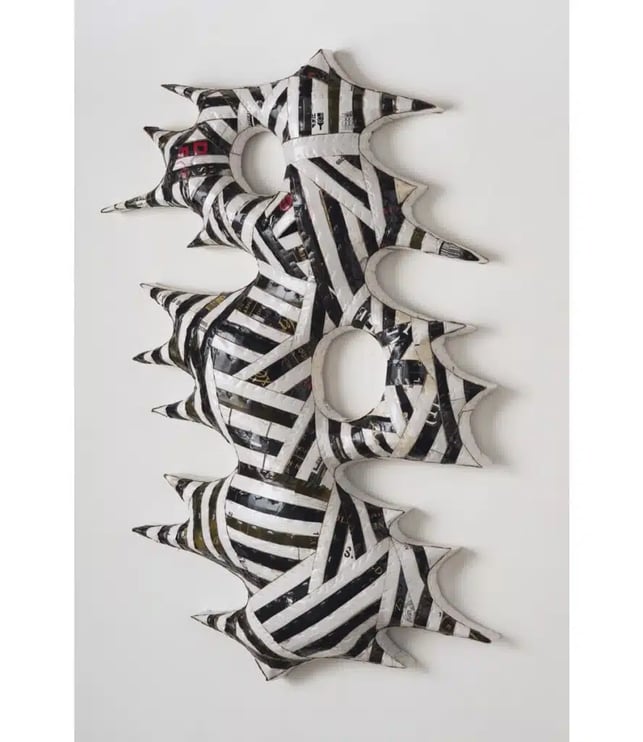
Cardboard
The final step for Ann was to discover the artistic potential of cardboard, “After graduate school,” she says, “my teacher said, ‘You’re a beginning artist for the first ten years’. That is so liberating because it doesn’t mean that whatever your last body of work is, that’s what you’re going to be working on. So I experimented with a lot of different things. I left clay; after all, I knew I wouldn’t set up an expensive pottery studio with kilns because I wanted to make large pieces.”
Ann’s second epiphany came about six or seven years after leaving school. “I was moving to different studios; I was sitting in the middle of the studio with a big pile of cardboard boxes from the move that I had flattened. And then I had another eureka moment like, ‘Oh, here’s another material’. Thinking about Frank Gehry’s cardboard furniture, I figured I could cut them into strips and somehow weave them together. At the hardware store, I saw somebody with a stapler and realised I could take it and staple it together. Then I thought, ‘I’m just going to weave them, and it goes faster’.
I don’t associate myself with the weaving movement or even the craft movement so much, but I have a huge debt to the craft movement. Basically, it’s like you put a seed in the ground, and the first thing that happens is a sprout. And so I’m interested in those primal forms, cylinders and circles. They’re from nature; they identify as male and female. So that’s my connection to the craft world, but also just to nature.”
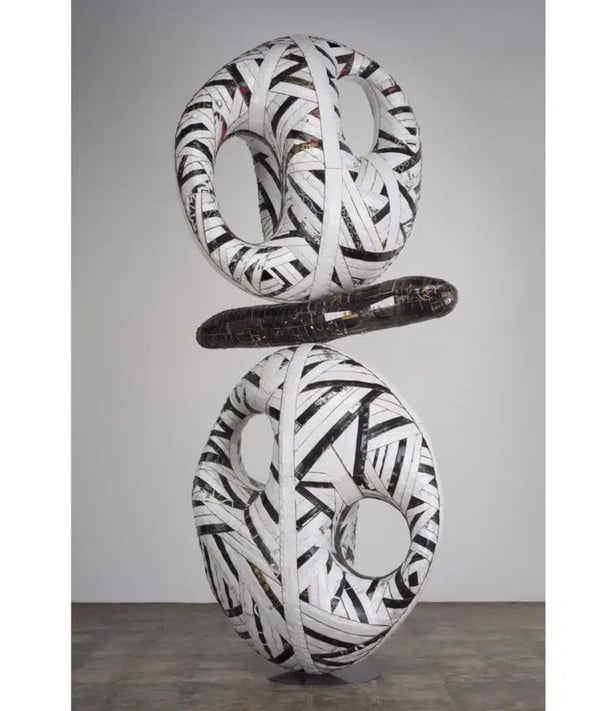
About the artist
Ann Weber’s artistic journey began with ceramics. After 15 years of making functional pottery, she left New York City for California to study with Viola Frey at the California College of Arts and Crafts in Oakland. Viola’s totemic clay figures inspired the scale of her work.
Ann started working in cardboard in 1991. Cardboard allows her to make monumental yet lightweight forms and eliminate the cumbersome process of clay. Frank Gehry’s cardboard furniture was her initial inspiration. Her abstract sculptures are read as metaphors for life experiences, such as the balancing acts that define our lives. “How far can I build this before it collapses?” is a question on Ann’s mind as she works. Ultimately her interest is in expanding the possibilities of making beauty from ordinary and mundane materials.
Ann illustrates that things are not always what they appear to be by casting ordinary cardboard into bronze or fibreglass for public art projects. Even in other materials, it is easy to see the details of the former lives of cardboard boxes and individual staples. This humble origin is part of the artwork’s innovation, charm and humour.
One of the unique qualities of Ann’s art is the psychological component. Neither entirely representational nor abstract, but something in between, she wants the viewers to bring their own associations to the artwork. Working with a palette of simple forms (cylinders and circles), the sculptures symbolise male and female forms and the natural world. Ann uses architecture and historical art references to evoke memory, relationships and morality in her sculpture.
Notifications
Join Our Newsletter
OUR YOUTUBE CHANNEL
View our interviews and more on our Youtube channel!
OUR FACEBOOK GROUP
Join our Community and stay updated with our upcoming announcements!

